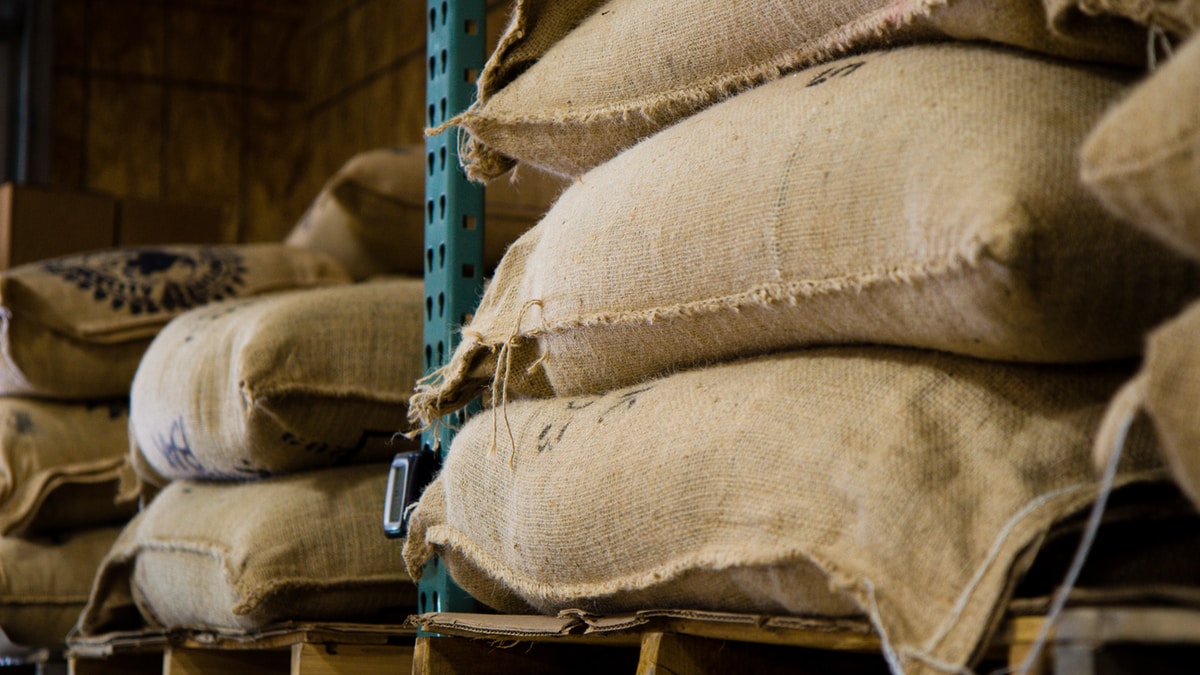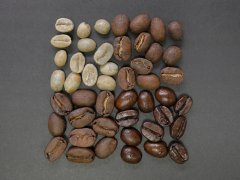How does the packaging material affect the preservation of raw coffee beans? Introduction to the Packaging material of Coffee Bean

The poor preservation or storage of raw coffee beans for too long will lead to the decline of the flavor and aroma of roasted coffee, resulting in great losses to farmers, traders and bean bakers, although the loss caused by prolonged storage time is inevitable. however, if you can choose the right packaging to preserve it, it can effectively prolong and improve the shelf life and quality of coffee beans.
So, which is better, burlap bag, high barrier bag or vacuum packing? How will these packaging materials affect the storage of coffee beans? How do we measure the difference?
Packaging material of raw coffee beans
The following are some common materials, including linen bags, breathable plastics, high barrier plastics, vacuum bags and so on.
Linen sack
Canvas made from natural fibers extracted from plants, jute or jute is the most traditional material used to make coffee bags. This is an environmentally friendly option, according to the United Nations Food and Agriculture Organization. It is 100% biodegradable and recyclable, so it is environmentally friendly, durable and economical, and is by far the oldest coffee packaging material.
However, sacks do not provide moisture-proof or antioxidant effects, which is the reason for defects such as poor quality or even mildew of coffee, because sacks are permeable.
In addition, traditional sacks can hold 60 kilograms of coffee (70 kilograms in some countries or regions). At the same time, large plastic bags and wooden cases can store 1 to 20 tons of raw beans. Depending on the batch stored or shipped, the manufacturer may decide to choose a larger and more efficient packaging material.
Plastic
Plastic bags for raw beans are most often made of polyethylene or polypropylene, ranging from 60kg bags, large bags and container linings. Compared with linen, plastic is cheaper and more resistant to moisture and oxygen, but it is still permeable.
High barrier bag
High barrier bags are packages with different components and structures that prevent the flow of gas and water inside and in the air. This kind of packing has high impermeability.
Although high barrier bags are more expensive than other types of packaging, they are designed to prevent chemical reactions between moisture and oxygen to maintain the quality of coffee. You can find high barrier packaging in all sizes, including container lining.
vacuum packing
After vacuum packaging, the coffee should be stored in an impervious plastic bag. Then, in addition to sealing and isolating the raw beans, negative pressure is generated to remove all air from the bag.
It is generally believed that multi-layer vacuum packaging is the most effective way to maintain the quality of raw coffee beans. However, due to the high cost, this method is usually only used for packaging samples, or micro-batch, nano-batch boutique coffee.
Define the degradation reaction of coffee
The degradation of coffee is a chemical change, resulting in a decrease in the flavor and aroma of beans, especially in sweetness and acidity. The cup test carried out by the professional Q grader according to the specifications of the boutique Coffee Association is still the most commonly used way to measure the quality of coffee. However, there are other ways to track the degradation of coffee.
Some of these methods focus not on the sensory quality of drinking coffee, but on the chemical composition of coffee beans and their relationship with cup flavor. This is a relatively new field, but these studies allow us to know the timing of flavor decay even with the help of taste and smell before coffee is significantly degraded. Nuclear magnetic resonance (NMR) and Raman spectroscopy are two methods for this purpose.
Abreu cross-references sensory reports from Q Graders and Raman spectroscopy results and analyzes raw beans stored over time in permeable and impermeable packaging.
Coffee samples are tanned and honey-treated coffee, cup test scores are more than 84 points. 30kg packages of three materials are used: non-barrier permeable paper packaging, paper packaging with impermeable high barrier plastic bags inside, and vacuum packaging. Coffee was analyzed every three months for a total of 18 months.
Influence of bag material: 0-6 months
In the first six months, the tube used different packaging materials, and Q grader could not clearly tell that there was a significant difference in cup test scores between sun-treated coffee and honey-treated coffee, no matter what material the raw beans were packaged, it was very unlikely to detect sensory differences in fine coffee in the first six months, because the difference was also very small.
When samples stored in permeable bags were chemically analyzed using NMR and Raman spectroscopy, the changes in these samples could be seen over three and six months. However, there was no obvious chemical change in the samples stored in impervious bags.
It can be proved that the chemical composition of coffee begins to change a long time ago, and this change will not be detected by professional cup testers until it has been stored for more than six months. This change is irreversible.
Suggested practice
The test score of the tube cup may not necessarily show the difference in the quality of raw beans with different packaging materials, but the beans have obviously begun to degrade, whether in sackcloth bags or high barrier waterproof bags.
It is recommended that after processing, raw coffee beans should be stored in a multi-layer high barrier structure, which can be in the form of large bags, ordinary sacks or lining. For fine sunburn and honey-treated coffee, the coffee should be kept in a high barrier bag immediately after it has been set aside for a period of time.
In the warehouse, large bags and high barrier liners help save inventory space and reduce costs. For smaller batches and convenient transportation, high barrier bags are more practical than linen bags.
Influence of bag material: 6-18 months
When raw beans are stored for more than six months, the cup test score of coffee stored in permeable packaging will drop. Professor Bor é m says the sensory differences are already startling.
He pointed out that the honey-treated coffee, which originally had a test score of 85-86 points, was stored in a permeable package, but after nine months, its cup test score was less than 80 and was considered to be a commercial bean. After 18 months, the cup test score was even less than 75. By contrast, the same coffee maintained a cup test score of 83-84 after one year in an impervious bag, but dropped to 82 after 18 months.
For permeable packaging such as high permeability, compared with vacuum packaging, the study found only negligible subtle differences.
Unlike in the previous six months, the treatment of raw coffee beans had a significant impact at this stage. Compared with honey-treated coffee, these changes were more obvious in sun-cured coffee.
Suggested practice
It is recommended to put the boutique coffee in an airtight bag immediately after storage (as long as it is high-quality coffee), which is even more imperative after six months. This is especially true for coffee processed with some or all of the flesh. When in the sun, coffee is particularly prone to degradation.
It is worth noting that this study is based on coffee in a stable environment. Coffee in transit (especially coffee to be transported across the sea) may be exposed to higher humidity. Without the protection of impervious packaging, there will be a higher risk of degradation, and container ships may also help to reduce this risk of degradation.
For boutique coffee, it is important to maintain the quality of coffee beans for as long as possible. Good preservation can protect the value of coffee and the hard work of producers and create a positive business relationship between traders and bean bakers. Pay attention to the packaging materials (especially the bags used for tanning and honey-treated coffee), which can significantly reduce the degradation of coffee beans over time so as not to spoil the essence of beans.
Important Notice :
前街咖啡 FrontStreet Coffee has moved to new addredd:
FrontStreet Coffee Address: 315,Donghua East Road,GuangZhou
Tel:020 38364473
- Prev

Effects of plant milk such as soybean milk, almond milk and oat milk on fine coffee
The best plant milk for coffee in recent years, plant milk has been widely used. Many people are trying to reduce their intake of animal products, and the boutique coffee market is no exception. Whether you choose plant milk for moral, health or other reasons, it is important to find a milk substitute that does not disguise the beauty of coffee. More and more customers are becoming vegetarians or lactose intolerant. But
- Next

What is the difference between new beans, old beans, old beans and high-quality old beans?
The roasting date of coffee beans is very important, and the roasting date can be used to determine whether the coffee is in a delicious state or whether it has been stored for too long or improperly stored. But do you know the state of these coffee beans before they are roasted? After the fruit is harvested, the coffee will be treated for several weeks, including the procedures of pulp removal, fermentation, drying, hand picking and so on.
Related
- Beginners will see the "Coffee pull flower" guide!
- What is the difference between ice blog purified milk and ordinary milk coffee?
- Why is the Philippines the largest producer of crops in Liberia?
- For coffee extraction, should the fine powder be retained?
- How does extracted espresso fill pressed powder? How much strength does it take to press the powder?
- How to make jasmine cold extract coffee? Is the jasmine + latte good?
- Will this little toy really make the coffee taste better? How does Lily Drip affect coffee extraction?
- Will the action of slapping the filter cup also affect coffee extraction?
- What's the difference between powder-to-water ratio and powder-to-liquid ratio?
- What is the Ethiopian local species? What does it have to do with Heirloom native species?

